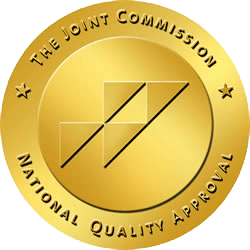Content Warning: this blog post discusses self-harm and self-injurious behavior and may not be suitable for certain viewers. If you or someone you love is feeling the urge to self-harm, seeking help is important. If you are feeling suicidal ideation or behavior, you can call the National Suicide Prevention Hotline at 988. Self-harm is one way that teens might try to cope with their negative emotions and beliefs about themselves. Self-harm can also result from an underlying mental health condition, such as depression, anxiety, or other behavioral conditions. Parents and caretakers may feel many emotions if they see signs that their teen is struggling with self-harm. The best thing that you can do as a caretaker is to ensure that your child gets the help that they need. At Destinations for Teens, we offer teen self-harm addiction treatment for those who are struggling with their mental health. Reach out to us today to discuss treatment options via 877.466.0620.
Understanding Self-Harm
Self-harm is when somebody purposely causes harm to themselves in response to negative emotions or beliefs, triggering experiences or negative memories. People who engage in self-harm often do so without the intention of suicide but rather just to hurt themselves, and often as a coping skill to prevent suicidal behavior or ideation. Many people who struggle with self-harm also struggle with underlying mental health conditions such as anxiety, depression, or personality disorders.
Causes of Self-Injury
The most common form of self-harm is skin cutting. You may notice cuts or scars on your child or teen’s hands, wrists, stomach, legs, or other areas of their body. However, these are not the only forms of self-harm that somebody might engage in. Other forms of self-harm include:
- Head-banging
- Burning
- Hair-pulling
- Excessive scratching of the skin to the point of drawing blood
- Punching oneself
- Drinking harmful substances such as bleach
- Attempting to break bones
- Pinching hard enough to break skin
- Using tools that hurt against one’s skin
Many people who suffer from self-harm tend to hide their injuries. If your teen constantly wears bracelets or long sleeves, even in hot weather, they might be covering up self-harm scars. Children and teens might also engage in self-harm only once, but often they do it repetitively in the same spot or different spots.
Teen Self-Harm Causes
There is no single answer to the question: what causes self-harm? Young people who engage in self-harming behavior often experience intense emotional pain. They may also feel lonely, worthless, overwhelmed, or empty inside and seek a way to feel better. Self-harm can also be a way for teens to take control of their bodies when they feel a lack of control. Some other causes of self-harm include:
- Express something that is hard to put into words
- Turn invisible thoughts or feelings into something visible
- Reduce overwhelming emotions, feelings, or thoughts
- Transfer emotional pain to physical pain
- Cope with chronic illness, including mental health conditions
- Punish oneself
- Stop feeling numb
People have noted that they feel a short-term sense of relief after self-harming. However, self-harm can also bring up difficult emotions that might make a person feel worse afterward. You might wonder how something that causes pain can help relieve pain. When human bodies are injured, they release certain chemicals to help us cope with the trauma of the injury. This rapid burst of natural painkillers can offer a momentary escape from struggles that your teen might not know how to handle in any other way.
Myths About Self-Harm
Parents tend to have a lot of questions surrounding self-harm, and therefore, there are some myths that physicians often hear. Some of these myths include:
- Cutting is the only form of self-harm
- Self-harm is always a result of suicidal thoughts
- Teens who self-harm are looking for attention or being dramatic
- Girls are the only ones who self-harm
- If I ask my child about self-harm, they will be tempted to try it
- Kids and teens will grow out of self-harming behaviors
- There is no treatment for self-harm
There are many things to look out for if you suspect your teen might be engaging in self-harming behavior.
Treatment for Self-Harm with Destinations for Teens
Self-harm can be a difficult topic to grapple with, especially if you notice that your teen is struggling with it. However, there are ways to treat self-injuring behaviors. If you believe your child might be self-harming, contact Destinations for Teens today to discuss our treatment options via 877.466.0620 or through our online form.


